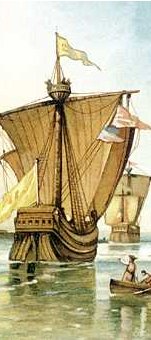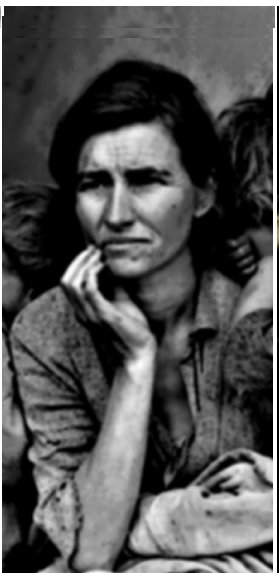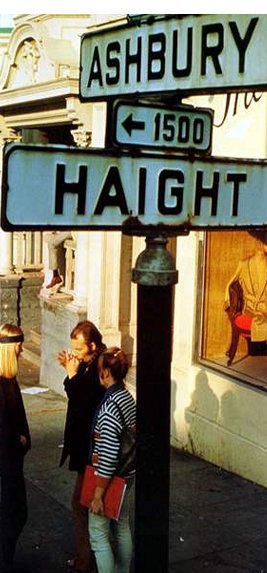The Man Who Changed California Seraphina Wang
G. Edward White is a Professor of Law at the University
of Virginia School of Law and was a
former law clerk to Earl Warren. He wrote Earl Warren: A Public Life to reveal
write about the man behind Earl Warren. Besides Earl Warren: A Public Life, he
has written several other books, including the two prominent books, The
American Judicial Tradition and Tort Law In America.
On July 9,
1974,
Earl Warren, died of cardiac arrest with his wife, Nina, and his daughter,
Honeybear, next to him. Surprisingly, after his death, Warren ceased to be "a figure
of widespread public interest."1 However, during his lifetime, Warren was hailed as one of America's greatest chief justices.
In Earl Warren: A Public Life, written by G. Edward White, White sought
to discern what made Warren one of the best chief
justices and what he did to change America.
Earl
Warren was born on March 19, 1891 and later attended the University of California, Berkeley. At Berkeley, Warren tended to see questions of
obedience "as one with moral dimensions."2 He discouraged
cheating, even if it was "cheating with dignity and pride."3
Warren showed an interest in political matters during
college, and sought out other careers related to law and justice. In one case
he later tried, the Point Lobos case in 1936, Warren prosecuted four of the five
defendants for the murder of Albert Murphy. The entire trial took eight weeks
ending in January of 1937 with Earl King, Earnest Ramsay, Frank Conner, and
George Wallace sentenced to prison terms ranging from five years to life. As a
governor, Warren was not a moderate but an activist trying to use office power
to further goals; he sought to retain progressivism in California and to
"support affirmative governmental action" on behalf of the disabled.4
In 1947, Warren supported a three cent increase in tax on gasoline to create
money for highway projects. He vetoed a bill in 1949 which stated that all University of California employees must sign an oath
declaring they are not associated in any way with communism. Instead, Warren signed the Levering Act
into effect in 1950 requiring all Californian employees to sign an agreement
that they did not associate with the Communist Party. Warren also "endorsed social
security" in California.5 Eventually, Warren was offered the
position of Supreme Court Justice. As a result, Warren finished his tenure as
governor and moved to Washington D.C. to start a new chapter in
his life as Chief Justice.
In
1953, Warren was appointed the Supreme Court Chief Justice. While Warren kept an interest in
administrative matters, Warren could not replace older
justices with new ones as he had done in California, meaning that the judges
often held differing opinions. One of his prominent cases was Brown v. Board
of Education. Warren's main concern was how to
"eradicate segregation in public schools" and how could it be
implemented effectively. 6 In December of 1953, Warren argued that the Court could
invalidate Plessy v. Ferguson if five justices would vote for the
invalidation. Also, Warren stated that the Fourteenth
Amendment justified that all citizens were given the rights of life, liberty,
and property. He successfully persuaded all of the other eight justices to
support a single opinion to end segregation. Another major trial during Warren's reign was the
investigation of John F. Kennedy's assassination. Warren, along with the Warren
Commission, ruled that Kennedy was assassinated by Lee Harvey Oswald only and
no other gunman was involved with the shooting. However, many other committees,
such as the Select Committee rebuffed this result, convinced that there had to
be another gunman involved in the shooting. To Warren, Oswald was the perfect
man to kill the president since Oswald "had been a misfit all his
life" and was incapable of working with anyone.7 Warren relied
on the FBI and CIA to make a final judgment that Oswald did indeed act alone,
even though he initially refused to examine the FBI file on Oswald because he
feared that would affect national security.
Before
he became the Chief Justice, Warren believed that ethical
principles were necessary for enlightened government. Warren's concern for conduct
became characteristic for him as a California public official. He refused
to have a campaign organization because he thought it was too interested in
"maintaining their own patronage" and would not benefit the public.8 He also believed that the Bill of Rights
checked, not defined, individual freedoms, interpreting it as a pursuit of
justice. Warren considered education as a right, since it formed the
basis of civilization, believing that the Constitution didn't "envisage in
unrestricted right."9 By 1958 though, Warren showed signs of rethinking
his stance on reapportionment matters. He felt that the protection of rights
and responsibilities made in the Constitution should be represented through
officials. He believed that the judiciary should "reform the
malapportioned legislatures" because reapportionment potentially meant
equal participation for all citizens.10 Warren also believed that humans
were susceptible to bad influences that should be suppressed because they were
often destructive. Warren strongly disapproved
pornographic books and believed that teenage lust could be suppressed if teens
were taught why looking at these books was wrong. On court, Warren spoke against purveyors of
obscenity and denied pornographers the rights of the First Amendment. In 1972, Warren called for the restoration
of a moral tone in America. He declared that crime was
a social issue that could be reduced by the removal of environmental factors
that make it grow. He cultivated public outrage about corrupt law practices and
attempted to shame lobbyists. By using government as a moral role model, Warren felt he was helping his
people avoid temptations.
When
Nixon won the presidential election and became president in 1968, Warren faced a dilemma: either
stay as Chief Justice or resign. By the end of 1968, Warren chose to resign after Nixon
became president, and in June of 1969, Warren retired. Predicting that
Warren Burger was to be his replacement, Warren "disassociated himself
from the Burger Court" because he sensed that the Court now resided in the
enemy's hands, as Burger often disagreed with Warren's views.11
After his resignation, Warren kept chambers in the Court building and selected
law clerks. Warren regularly visited the West Coast for vacations and to
get away from the press. He combated the presence of special interests, growth
of political machines, and corruption in of government. Morality, progress, and
patriotism were three qualities Warren included in his ruling of
cases; he wanted citizens to also live according to the laws and stay loyal to America. Like other progressives, Warren encouraged active
government because he wanted the government to always be flexible in making
changes whenever necessary. He wished to make the government a way to represent
the people's opinions rather than rule authoritatively. G. Edward White's main thesis was that Earl Warren
wasn't just any ordinary California governor and Chief Justice.
He thought that Warren took every opportunity he
had and made it a chance "for him to grow and face a new challenge."12
From prison reforms to health insurance, it seems that White's thesis of Warren is true. For instance, Warren changed prison procedures
because he noticed that criminals who served jail time and gotten released
often times return to jail for a longer prison time. Warren believed that the
government needed to implement programs to instruct criminals how to avoid
crimes in the future. Through these programs, the criminals learn not to commit
the same crime again and to shun other crimes as well. Warren cared deeply for the poor;
he proposed state-supported health insurance for the destitute. As a
Republican, he considered himself to be a true representative of what the
Californians wanted and strove to change California's procedures in order to
fit the citizens needs. He constantly succeeded in having things his way by convincing
others why his viewpoint was correct. Through Warren's stubbornness, White
inferred that Warren changed what he wanted to change through persuasion.
White concluded that Warren indeed tried to seize every
opportunity in order to improve society through skill and experience.
G.
Edward White analyzed Earl Warren because he wanted to put in print some of Warren's good deed and to dispel
myths. Though Warren was often praised for his achievements during his
tenure as Chief Justice, White knew "there was much more to Earl Warren.¡¨13
White used different articles and interviewed people that knew Warren in order to write an
accurate book discussing Warren's achievements and his
family life. wanting to prove that he was a capable leader. Because people forgot
who Warren was after his death, Warren made sure to let people
always remember Warren and what he did to make California and the United States better. Originally, White
envisioned the book he wrote as an extended essay on Warren and his career. But when he
researched more about Warren, White came to the
conclusion that an extended essay would not do Warren any justice. Instead, White
chose to write a conventional biography in order to pen down and disucss Warren¡¦s accomplishments. White
specifically wanted to portray Warren as the progressive who
transcended the "political context of its origins" and as an educated
reformist.14 He believed Warren's vision of America as a powerful nation was a
vision that many people shared during his lifetime. Also, White juxtaposed Warren the public figure versus
Warren the private person to contrast his professional and personal life. White repeatedly wrote about common
themes and attitudes about Warren to show the consistency in Warren with regards to his
decision-making and problem-solving, such as morality and patriotism.
The
New York Times ¡§Book Review¡¨ hailed the Earl Warren: A Public Life
as a phenomenon. Because of Warren, the Warren Court acted "as a principal
national engine of reform" and remade race relations and enlarged freedom
of expression and press.15 Warren was an affable and hearty
figure who was single-minded but did not take criticism well. When he became
Chief Justice in October, 1953, Warren argued that the separate
but equal doctrine of racial segregation was invalid. With his single-minded
personality, Warren managed to convince others of his opinion and
invalidated the separate but equal doctrine. From the beginning in his public
life, Warren showed that he was a moralist who despised corruption
and organized crime. Book Review discovered that Warren's progressivism was an
ahead of its time; Warren was a progressive but he
moved to a more liberal sense of concern for people. One finishes the book with
a respect for Warren and what he did for America. He was neither an
intellectual nor a philosopher, but possessed qualities generally not found in
politicians. Konrad M. Hamilton
from University of Iowa stated that Warren was guilty of civil rights
violations before landing the position of Chief Justice. Warren denied defendants the
access of attorney during interrogation sessions and did not inform them of
their rights. Hamilton criticized Warren for acting paradoxically by
promoting equal rights but not carrying out what he says himself. In brief, Warren "engaged in [the]
criminal procedure practices" at the eventually condemned when he became
Chief Justice.16 Hamilton argued that some people might want to
attribute political self-interest as a cause for Warren's actions. Despite the
criticisms, Hamilton rated the book as
insightful and worth a read. The book allowed readers a different view of America through Warren's life.
In
general, one main thing that could be improved was the flow of the four main
sections the book contained. Often times, White jumps from one decade to
another and back, making the book hard to follow. Although White's book did
point out some flaws, it also emphasized the accomplishments. Warren was the first and last
major liberal Chief Justice. He promoted the "protection of the individual
against the state" and allowed minorities the freedom of choice.17 Since
he believed in equality, Warren supported due process of
law for all peoples. Morever, he accomplished a lot as Chief Justice and as California's governor, but also spent
quality time with his family, a peculiar action for a devoted and preoccupied
Chief Justice. However, Warren made sure he at least spent
dinnertime with his family and even disconnected the phone line so nobody could
interrupt. Warren emphasized his children's morals and values. He
banned his children from pornography, threatening to severely punish them. Warren assumed if he prevented his
children from evildoings, then they would be less tempted to commit crimes as
adults. Believing education to be the key for a nation to be well-grounded, Warren provided the best schooling
to his children to ensure that they would eventually be successful in life. He
was strict on his children's studies and held high standards for grades. His
concern about his family and his children's upbringing showed people that not
only did he care about America but he also worried about
his children and wife thus making the citizens believe that he was truly
devoted in caring for everyone.
When
Warren became Chief Justice, he battled Brown v. Board of
Education, a case that especially affected the South where lynchings and
mob riots still existed. When Warren declared Plessy v.
Ferguson and separate but equal schools unconstitutional, many were
outraged. Warren thought minorities deserved the same education as
Caucasians. Though he and eight other justices ruled for Brown and against the
education board, it would take another reevaluation and several more years
before the Supreme Court ordered every state to abolish segregated schools.
This case eventually sparked the civil rights movement in the 1960's and led to
other court cases that struck down forms of discrimination. One difference that
distinguished California from other states was the
Levering Act that Warren passed when he was
governor. Though other states had anticommunist oaths, the Levering Act proved
to be a controversial issue in California since many non-signers "felt
offended that they were accused of being Communists" if they did not sign.18
The non-signers thought they did not have to sign the oath in order to confirm
that they were anticommunists. Also, Warren improved prison conditions
by making sure the criminals understood their wrongdoings. State-funded health
insurance was also unique to California; now, everyone had the
possibility of receiving some kind of health care. Warren helped to change California through many ways.
White
viewed California as important by stressing
how a Californian governor stepped to the national level and became a Chief
Justice that forever altered America. Through his decisions, Warren brought justice and
terminated racism. Trying to be fair to all, Warren also encouraged citizens to
vote. White implies that Warren achieved so much as Chief
Justice primarily because he gained experience by engaging himself in politics
during his attendance at Berkeley and by becoming California's governor. Through his
experience, Warren learned how to become an effective leader and to
represent the people and their opinions. White believed California was a vital stepping stone
for Warren for preparing him for the national level of
leadership. Without California, Warren might never have been as
successful as he was. Warren needed California to expose himself to real
politics and reforms. White also inferred that California served as an example to
other states with its prison reforms, state-supported health insurance, and the
Levering Act to ensure the loyalty of the Californians. Most importantly, California helped shape Warren and his "identification
with the Republican party" along with his Progressive ideas.19
Indeed
Earl Warren was a different man from his media portrayal. With his prison
reforms and health insurance policies, California improved.
With his belief in equality, the nation improved. All in all, Warren brought
change that affected everyone in some way. He truly was one of California's best
governors and one of the most "significant figures in... American
history."20
1. White, G. Edward. Earl Warren: A Public Life. New
York: Oxford
University Press., 1982. 325.
2. White, G. Edward 15.
3. White, G. Edward 15.
4. White, G. Edward 102.
5. White, G. Edward 153.
6. White, G. Edward 163.
7. White, G. Edward 194.
8. White, G. Edward 221.
9. White, G. Edward 236.
10. White, G. Edward 239.
11. White, G. Edward 315.
12. White, G. Edward 9.
13. White, G. Edward 5.
14. White, G. Edward 6.
15. Lewis, Anthony. "Revolutionary Justice". The
New York Times Book Review 04 July 1982. 01 June 2008.
<http://query.nytimes.com/gst/fullpage.html?res= 9D02E0D7123BF937A35754C0A964948260&sec=&spon=&pagewanted=4>.
16. Hamilton, Konrad M. "Untitled". Jstor. 01 June 2008
<http://www.jstor.org/stable/pdfplus/ 3377148.pdf>.
17. Lewis, Anthony.
18. White, G. Edward 117.
19. White, G. Edward 86.
20. White, G. Edward. 6





















